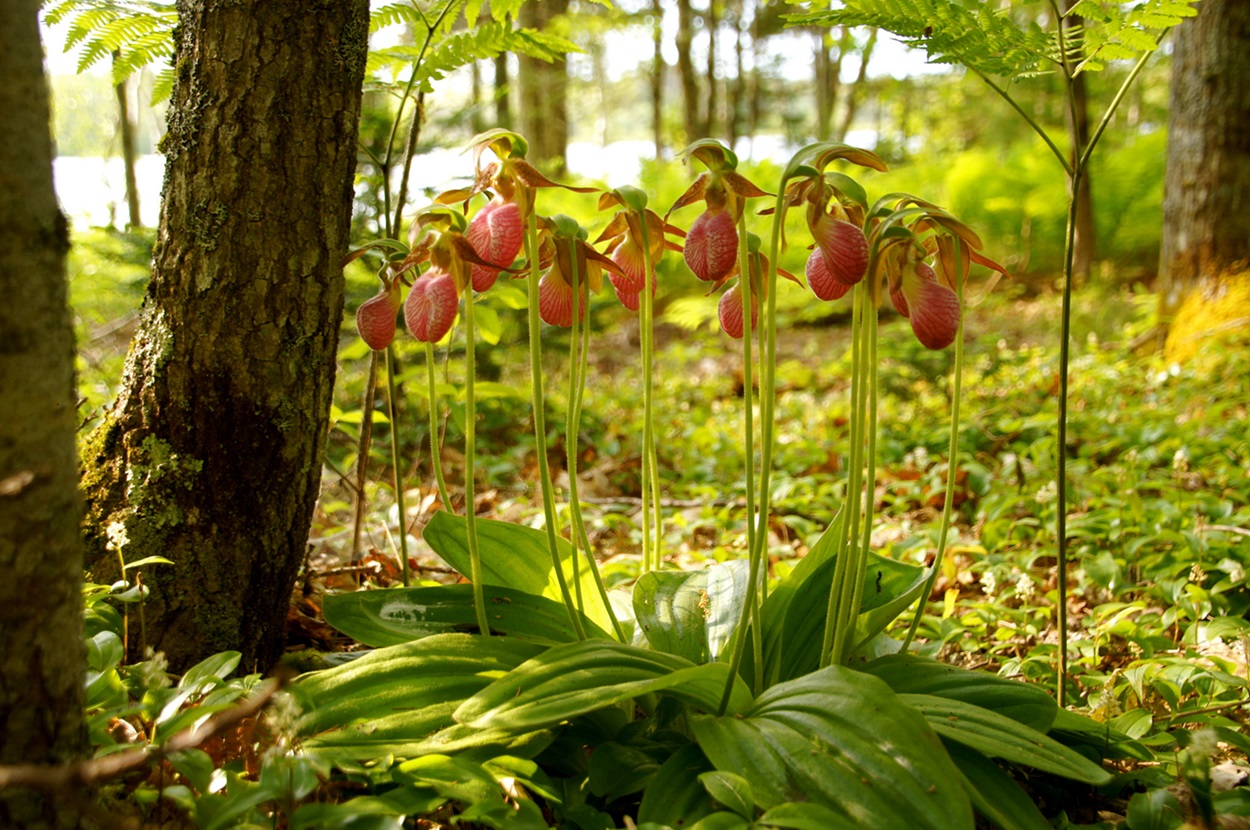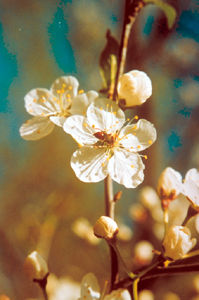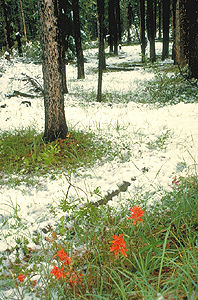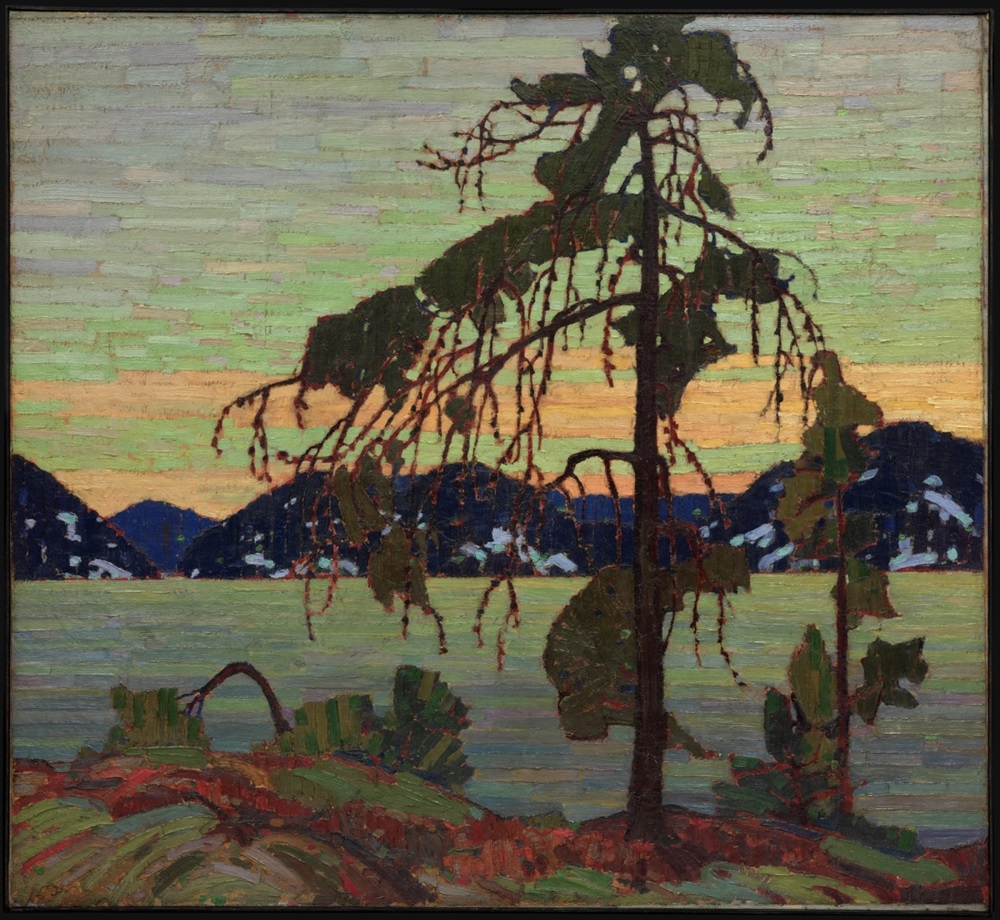Browse "Plants"
-
Article
Oak
The Oak (Quercus) is a genus of trees and shrubs of the beech family (Fagaceae). Of the estimated 200 species found worldwide, 75-80 occur in North America and 10 in Canada.
"https://d2ttikhf7xbzbs.cloudfront.net/media/media/bf6965b1-4a0e-4d36-9e7b-d433fa8833a6.jpg" // resources/views/front/categories/view.blade.php
https://d2ttikhf7xbzbs.cloudfront.net/media/media/bf6965b1-4a0e-4d36-9e7b-d433fa8833a6.jpg
-
Article
Old-Growth Forests in Canada
Old-growth forests are complex forest ecosystems that have developed over a long period of time without experiencing any major disturbances. They have unique features and significant ecological, social, cultural and economic value. Old-growth forests used to be a significant part of Canada’s forest landscape but now only exist as small, fragmented patches due to intensive logging (see Forest Harvesting), conversion of forest for agriculture, insect epidemics (see Four Major Insect Pests of Forests in Canada), wildfires and disease. Increasing measures to protect these ecosystems are being implemented across Canada to combat their continued decline.
"https://d2ttikhf7xbzbs.cloudfront.net/oldgrowthforests/lady-slippers.jpg" // resources/views/front/categories/view.blade.php
https://d2ttikhf7xbzbs.cloudfront.net/oldgrowthforests/lady-slippers.jpg
-
Article
Orchid
Calypso bulbosa has similar but smaller, delicate pink flowers. Some Spiranthes and Habenaria species have small, whitish, fragrant flowers in a spike. Two genera, Eburophyton (plant is white) and Corallorhiza (plant is yellow to purple), live on decaying vegetable matter.
"https://d2ttikhf7xbzbs.cloudfront.net/media/media/bdc4d290-63b3-44ee-a1c0-cdd4bd1288a8.jpg" // resources/views/front/categories/view.blade.php
https://d2ttikhf7xbzbs.cloudfront.net/media/media/bdc4d290-63b3-44ee-a1c0-cdd4bd1288a8.jpg
-
Article
Organic Agriculture
Organic agriculture is defined as the sustainable cultivation of land for food production that nourishes soil life, nurtures animals in their natural environment and feeds them according to their physiology.
"https://development.thecanadianencyclopedia.ca/images/tce_placeholder.jpg?v=e9dca980c9bdb3aa11e832e7ea94f5d9" // resources/views/front/categories/view.blade.php
https://development.thecanadianencyclopedia.ca/images/tce_placeholder.jpg?v=e9dca980c9bdb3aa11e832e7ea94f5d9
-
Article
Paintbrush
The paintbrush is a herbaceous plant of genus Castilleja , figwort family, Scrophulariaceae. Most are perennial. The common name, Indian paintbrush, is applied to several species. About 200 species occur worldwide, mostly in
"https://d2ttikhf7xbzbs.cloudfront.net/media/media/e956cb56-7b37-403b-b2fd-5534ec2bfade.jpg" // resources/views/front/categories/view.blade.php
https://d2ttikhf7xbzbs.cloudfront.net/media/media/e956cb56-7b37-403b-b2fd-5534ec2bfade.jpg
-
Article
Pea
Some pea cultivars are grown in gardens for their tender green pods as VEGETABLES, which are harvested at their early stage of development, and eaten raw or cooked. They are known as snowpeas, sugar peas or snap peas. In parts of Asia and Africa, tender pea foliage is harvested as vegetable.
"https://d2ttikhf7xbzbs.cloudfront.net/media/media/c93aa17c-6f82-4a85-a663-e17d602ee501.jpg" // resources/views/front/categories/view.blade.php
https://d2ttikhf7xbzbs.cloudfront.net/media/media/c93aa17c-6f82-4a85-a663-e17d602ee501.jpg
-
Article
Pepper
Pepper (Capsicum annuum) is a perennial plant, cultivated as an annual and belonging to the nightshade family.
"https://d2ttikhf7xbzbs.cloudfront.net/media/media/63e5fe3e-d018-4a90-bfa7-b4e1e6fd7997.jpg" // resources/views/front/categories/view.blade.php
https://d2ttikhf7xbzbs.cloudfront.net/media/media/63e5fe3e-d018-4a90-bfa7-b4e1e6fd7997.jpg
-
Article
Phlox
Tall, vibrantly coloured summer-flowering phlox, derived from eastern North American P. paniculata, one of the most popular garden perennials in Canada, is often used for island beds or as border plants.
"https://development.thecanadianencyclopedia.ca/images/tce_placeholder.jpg?v=e9dca980c9bdb3aa11e832e7ea94f5d9" // resources/views/front/categories/view.blade.php
https://development.thecanadianencyclopedia.ca/images/tce_placeholder.jpg?v=e9dca980c9bdb3aa11e832e7ea94f5d9
-
Article
Pine Trees in Canada
Canada is home to 10 species of pine trees. Distinguishable by their bundles of two, three or five needles, various species can be found throughout Canada’s provinces and the Yukon and Northwest Territories. These conifers can live for hundreds of years, with the oldest pine tree in the world being around 4,900 years old and located in Nevada. Two pine species are designated provincial trees in Canada: the lodgepole pine in Alberta and the eastern white pine in Ontario.
"https://d2ttikhf7xbzbs.cloudfront.net/pinetrees/The_Jack_Pine-_by_Tom_Thomson.jpg" // resources/views/front/categories/view.blade.php
https://d2ttikhf7xbzbs.cloudfront.net/pinetrees/The_Jack_Pine-_by_Tom_Thomson.jpg
-
Article
Pitcher Plant
Pitcher plant is the common name for certain perennial herbs adapted to wet, marshy and boggy habitats low in nutrients. They have rosettes of leaves that are modified into tubular, trumpet-like structures filled with liquid that function as insect traps. The plants generally bear a single, large nodding flower. Canada is home to only one species, the purple pitcher plant (Sarracenia purpurea).
"https://d2ttikhf7xbzbs.cloudfront.net/media/widgets_images/pitcherplant/Ptcher-Plant.jpg" // resources/views/front/categories/view.blade.php
https://d2ttikhf7xbzbs.cloudfront.net/media/widgets_images/pitcherplant/Ptcher-Plant.jpg
-
Article
Plankton
Plankton [Gk planktos, "drifting"], plants and animals , phytoplankton and zooplankton, respectively, that float freely or drift with currents in oceans , freshwater ponds and lakes.
"https://development.thecanadianencyclopedia.ca/images/tce_placeholder.jpg?v=e9dca980c9bdb3aa11e832e7ea94f5d9" // resources/views/front/categories/view.blade.php
https://development.thecanadianencyclopedia.ca/images/tce_placeholder.jpg?v=e9dca980c9bdb3aa11e832e7ea94f5d9
-
Article
Plant
The shoot system (stem and leaves) grows upward into the light and is the site of photosynthesis; the root system penetrates the soil, anchors the plant and absorbs necessary water and minerals.
"https://d2ttikhf7xbzbs.cloudfront.net/media/media/8c6d96af-79e3-4fb0-bbea-a540ea72e324.jpg" // resources/views/front/categories/view.blade.php
https://d2ttikhf7xbzbs.cloudfront.net/media/media/8c6d96af-79e3-4fb0-bbea-a540ea72e324.jpg
-
Article
Plant Breeding
Plant breeding is an applied science, in which knowledge of genetics, pathology, plant physiology, statistics, and molecular biology are used to modify plant species for human needs or preferences.
"https://development.thecanadianencyclopedia.ca/images/tce_placeholder.jpg?v=e9dca980c9bdb3aa11e832e7ea94f5d9" // resources/views/front/categories/view.blade.php
https://development.thecanadianencyclopedia.ca/images/tce_placeholder.jpg?v=e9dca980c9bdb3aa11e832e7ea94f5d9
-
Article
Plant Classification
Popular classification usually divides living beings into plants and animals and, sometimes, microbes. Scientific classification long followed a similar system, with 2 principal kingdoms: the animal order and the vegetable order.
"https://d2ttikhf7xbzbs.cloudfront.net/media/media/edce9657-3d08-4b7c-b369-aa52cc7f8d79.jpg" // resources/views/front/categories/view.blade.php
https://d2ttikhf7xbzbs.cloudfront.net/media/media/edce9657-3d08-4b7c-b369-aa52cc7f8d79.jpg
-
Article
Plant Disease
Plant disease can decrease the economic, aesthetic and biological value of all kinds of plants. Plant pathology (phytopathology) is the study of the nature, causes, prevention and socioeconomic aspects of plant diseases.
"https://development.thecanadianencyclopedia.ca/images/tce_placeholder.jpg?v=e9dca980c9bdb3aa11e832e7ea94f5d9" // resources/views/front/categories/view.blade.php
https://development.thecanadianencyclopedia.ca/images/tce_placeholder.jpg?v=e9dca980c9bdb3aa11e832e7ea94f5d9
